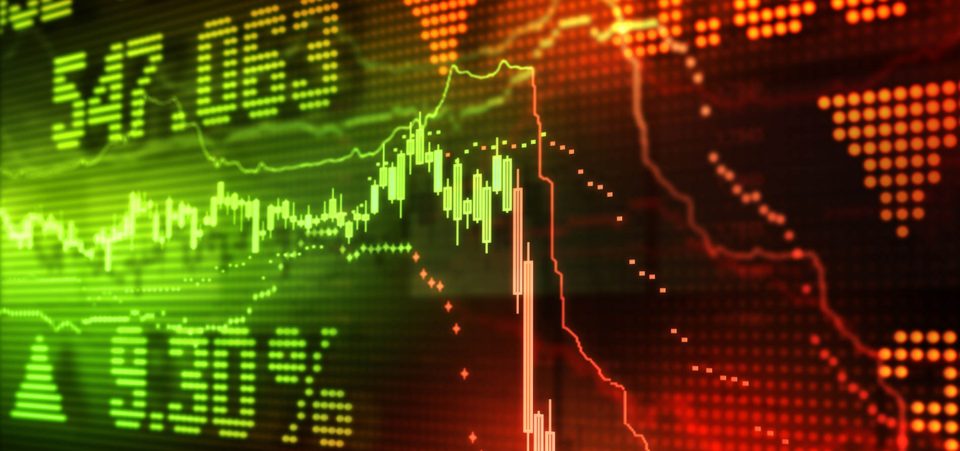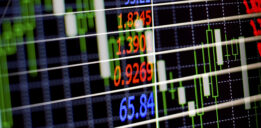Stocks End 2016 on High Note But With No Fuel for Growth
After being gutted in the first six weeks of 2016, U.S. stocks rebounded that year as investors shrugged off fears of a slowing global economy and the Federal Reserve’s first interest rate hike in a decade. From mid-February 2016 onward, the S&P 500 climbed steadily higher, ending the year up nearly 10%.
This is a far cry from 2015, when the S&P 500 slipped by 0.7%. Wall Street may be filled with hope about President-elect Donald Trump but, the fact is, there is nothing to sustain the almost-nine-year bull market. As a result, 2017 could be the year that the overvalued, overhyped S&P 500 experiences a purifying crash.
In the end, 2016 was a good year for U.S. stocks and the broader benchmarks. The Dow Jones Industrial Average (DJIA) boasted a 13.5% increase in 2016, closing in on the psychologically important 20,000 level. The S&P 500 ended the year up almost 10% at record levels, and the Russell 2000 Small Cap Index was up an eye-watering 20% in 2016.
Yes, it was a good year for stocks. And the bulls on Wall Street see the S&P 500 thriving in 2017, thanks in large part to Trump’s business-friendly policies, which includes lowering taxes, less regulation, and $1.0 trillion in infrastructure spending.
But with stocks sorely overvalued and history on the side of the bears, is it just a matter of time before U.S. stocks crash in 2017? The year may be starting on a good foot, with Trump’s inauguration just more than two weeks away, but there is nothing to support the current bull market. And, aside from unbridled hope, nothing to propel stocks further.
Investors may not pay attention to something as basic as stock valuations, but they should because it could be their undoing in 2017.
S&P 500 Overvalued by 73%
In the old days, investors would send stocks higher when the companies reported strong revenue and earnings growth. That doesn’t hold water today. If there’s one thing that doesn’t matter to investors right now, it’s valuation. If it did, stocks wouldn’t be moving up as quickly as they are.
According to the Case-Schiller cyclically adjusted price-to-earnings (CAPE/PE) ratio, the S&P 500 is overvalued by 73%. The earnings ratio, which helped Shiller win the Nobel Prize for Economics in 2013, is based on average inflation-adjusted earnings from the previous 10 years.(Source: “Online Data Robert Shiller,” Yale University, last accessed January 3, 2017.)
The ratio is currently at 27.80, meaning that, for every $1.00 of earnings a company makes, investors are willing to fork out $27.80. The ratio has only been higher twice: 1929 and 1999. In the lead-up to the Great Recession, the index topped out at 27.55. (Source: Ibid.)
Again, investors, for the most part, don’t pay attention to valuation. This is perhaps a mixed blessing. If they did, they would have missed out on the most recent bull market, which also happens to be the second longest in history.
The Case-Shiller P/E ratio is excellent at showing investors how overvalued stocks are, but it isn’t a Magic 8 Ball that predicts when the markets will tank. It does have history on its side, however, and history tells us that the S&P 500 has only twice been overvalued for a longer period of time. And it crashed on both occasions (1929 and 1999).
Stocks Poised to Crash in 2017?
Why do investors believe that the bull market will continue in 2017 and beyond? They’re confident that Donald Trump’s economic plans will send the U.S. economy into overdrive, which would translate into a cycle of significant profit growth.
This would have the added benefit of bringing valuations back in line, even though the last nine years have showed us that investors don’t care about valuations. So why wouldn’t they propel stocks higher if earnings are even a little encouraging?
The idea that corporate profits will soar 10% (analyst projections) in 2017 is nothing short of a miracle. Consider that S&P 500 companies reported two straight years of negative growth and only just—in the third quarter of 2016—ended a five-quarter earnings recession.
Moreover, the bull market is about to enter its ninth year. At no point in history have corporate profits soared more than 10% eight years into a bull market.
With household debt levels climbing, personal savings non-existent, and wage growth anemic, the odds of corporate profits and valuations coming together in 2017 is impossible. What is a sure bet, though, is that stocks will remain significantly overvalued in 2017. And investors will get antsy without anything to propel stocks higher in 2017.
What they could be faced with are factors that could send stocks downward. This includes geopolitical tensions between the U.S. and Russia, China, and even North Korea.
Closer to home, Donald Trump’s economic stimulus plan to cut taxes but increase spending, at a time when the U.S is already $20.0 trillion in debt, might raise a few eyebrows in Economics 101. This, coupled with another interest rate hike in March, could negatively impact the broader U.S. economy. In a worst-case scenario, the U.S. could careen closer to a recession, which would undermine stocks.
But with stocks trading at record levels and investor optimism around Trump soaring, who is going to bet against the U.S. economy? Investors may not pay attention to valuation, but history is closing in.
For those investors not quite as optimistic about the longevity of the current bull market, it might be a good idea to consider precious metals like gold and silver. Or for those brazen investors, to short the S&P 500 and the DJIA.






